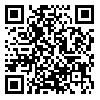Volume 16, Issue 3 (Autumn 2021)
jmed 2021, 16(3): 207-215 |
Back to browse issues page
Download citation:
BibTeX | RIS | EndNote | Medlars | ProCite | Reference Manager | RefWorks
Send citation to:



BibTeX | RIS | EndNote | Medlars | ProCite | Reference Manager | RefWorks
Send citation to:
Mortazavimoghaddam S G, Allahyari E, Vahedi F, Zare Bidaki M. The Effect of Web-based Flipped Classroom Approach on Learning and Satisfaction of Medical Students Comparison with Lecture-based Method. jmed 2021; 16 (3) :207-215
URL: http://jmed.ssu.ac.ir/article-1-1221-en.html
URL: http://jmed.ssu.ac.ir/article-1-1221-en.html
Birjand University of Medical Sciences , m.zare@live.co.uk
Abstract: (2102 Views)
Introduction: Student-centered educational models, such as Flipped classrooms, seem to provide more educational opportunities for learners, especially when combined with web technology. This study aimed to evaluate the effectiveness and satisfaction of medical students with the web-based Flipped classroom method in comparison with the lecture-based teaching method. Method: This is a quasi-experimental case-control study that evaluates 51 people in each of the two intervention and control groups. In the intervention group, pulmonary physiopathology e-contents were delivered to the students one week before the presence-based class in the form of digital files such as video, text, image, audio and interactive applications through Navid learning management system. Students were required to read the content before the class. Then the face-to-face classroom time was completed with group discussion, question and answer and problem-based learning. In the control group, teaching was carried out by the traditional lecture method in the classroom. Data were analyzed using SPSS, 18. Result: In terms of age, sex and, mean pre-test scores, there were no significant differences between the groups. The mean scores in the final exam turned out to be 14.66 (10.16-66) in the intervention group but 12 (9.14-3.66) in the controls (P < 0.001) to make a significant difference. In addition to gaining higher final exam scores as for the flipped classroom group, they were also more satisfied with the procedure (P < 0.001). Conclusion: The flipped classroom approach not only improves learning but also leads to greater students’ satisfaction.
Type of Study: Research |
Subject:
Medical Education
Received: 2021/07/3 | Accepted: 2021/08/8 | Published: 2021/12/1
Received: 2021/07/3 | Accepted: 2021/08/8 | Published: 2021/12/1
Send email to the article author
| Rights and permissions | |
 |
This work is licensed under a Creative Commons Attribution-NonCommercial 4.0 International License. |







